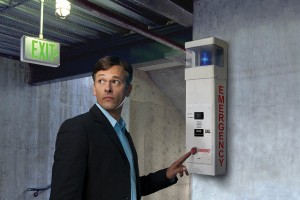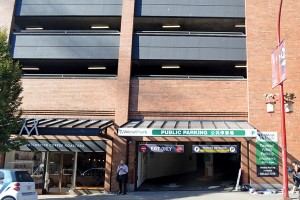Too often, ancillary parking lots are under-appreciated assets, neglected by their owners and managers until a problem arises.
Yet as we’ve learned in an article published in BOMA Magazine, the International Building Owners and Managers Association (BOMA) magazine, poor management decisions – deficient outsourcing contracts, inefficient operations, maintenance issues, employee theft, fraud, financial irregularities and poor use of occupancy statistics – can cause losses of up to 28% of parking revenues1.
This is a sign that managing this essential mobility tool in our cities deserves to be examined more closely.
Parking Lots: woven into the urban fabric
The history of parking lots is of course linked to the history of automobiles. Before they debuted in cities, streets were designed for travel by coach, tram or bicycle, or on foot. Then cars became financially accessible for a growing segment of the population and on-street parking quickly became saturated.
We believe that drivers searching for on-street parking represents about 30%2 of all traffic volume. This is particularly high near sites that generate parking needs such as subway stations, hospitals, shops, schools, educational institutions and workplaces. In a big city, where about 90% of on-street parking is free3 (this drops to 50% for downtown areas), this is one of the reasons why municipal authorities, concerned about the environmental, societal and economic implications of traffic congestion, rely more and more on policies that limit free on-street parking and often depend on the private sector to fill the gap.
Optimum Parking Management: the Art and Practice
Sound management of these infrastructures that are indispensable to city life allows us to optimize their operation and improve their profitability. Beyond the financial benefits, however, parking lots managed with profit in mind as well as efficiency can support the efforts of city authorities concerned with ensuring the quality of life and the environment of…
By John Mosebar
The parking industry is moving rapidly to contain costs, primarily by creating unstaffed facilities through the automation of ticketing and payment processes. Pair that with a large number of patrons and vehicles in easily accessible facilities and it’s easy to see why parking lots and garages can become magnets for criminals.
Crimes range from theft of property and vehicles to violent assaults against patrons. Fortunately, nearly all parking facility owners and operators feel a very real need to protect their patrons. Security is also an important issue with drivers. Surveys show one-third cite safety as a top factor in choosing where to park their vehicles.
Providing security has become easier with tried-and-true tools and procedures. But there is no one-size-fits-all security plan as parking facilities vary widely by size, type and location. For a parking operator, the process should begin by choosing a security integrator with proven experience securing parking facilities.
Security Tools
All-hazards assessment – Don’t spend money on security before first analyzing the strengths and weaknesses of the facility. Check out the surrounding neighborhood and traffic patterns. Monitor patron’s daily routines. Identify
danger zones such as remote areas of lots and garage stairwells and elevators. This will help create a plan to allocate money for the right equipment, where it is most needed.
Then here’s a look at some of today’s best security tools solutions.
Audio intercoms – Build audio intercoms into entry/exit gates and ticket dispensers to provide instant two-way communication with an offsite security guard or facility operator.
Emergency stations – Although most parking patrons carry their own mobile phones, those devices can’t be counted on in many subterranean or concrete structures or even outdoors during severe weather. Mobile phones also are often the first target of thieves.
Emergency towers, wall-mount boxes or flush mounted stations are effective when placed throughout garages…
By Karim Abraham
Automated lighting controls such as occupancy sensors present significant savings potential for parking facilities. However, quantifying potential savings and assessing the financial viability of a lighting automation project can be challenging. The missing link in planning energy savings projects is actual data to build an accurate business case.
Recently, a parkade in Vancouver’s Chinatown neighbourhood underwent an exercise to reduce energy costs and improve building performance. The parkade had been approached a number of times to update their lighting to save costs. Each time, the numbers looked slightly different – and there was no way to tell what the actual return on investment would be. Eventually, the automation project that was implemented would accurately predict savings and reduce the parkade’s costs by installing occupancy sensors in conjunction with real-time data monitoring.
Energy specialists recognized that the parkade lights did not need to be on 24 hours a day, and that the best business case involved adding occupancy sensors to dramatically reduce the amount of time lights were on each day. The problem was that they were still making assumptions on how much of a reduction the occupancy sensors would generate. Busy days could have significantly lower savings than weekends, and at night the traffic would be different again.
Using a systematic approach, data loggers were installed on the lights in the parkade, and pilot occupancy sensors were installed on one floor only. The data that was produced over the coming weeks showed a reduction in consumption by 49.3% as a result of the installation of occupancy sensors. An excellent result.
The data was then pro-rated to factor the varying traffic flow by floor, and savings calculations were adjusted accordingly. For example, lower floors are likely to receive more traffic and therefore achieve lower savings. The pilot occupancy sensors were installed on…
By Andrew Vidor
There has been a lot of discussion in recent years about Canada’s “crumbling infrastructure.” City, provincial, and national decision-makers are facing hard choices—and potentially enormous bills—about how to repair old and worn roadways, bridges, and viaducts.
This infrastructure crisis should serve as a cautionary tale for parking owners, both public and private. As with any infrastructure component, your parkade requires maintenance and routine repairs over its lifetime. To borrow a cliché, it’s easy to be penny wise, but pound foolish. Deferring (or ignoring) routine maintenance will inevitably lead to far more expensive repairs down the road.
But protecting your parking investment doesn’t end with maintenance. It’s just as important to have an asset management plan to operate, maintain, and perhaps even plan for the decommissioning of your parking assets at the end of their useful service life. An asset management plan should revolve around the specific characteristics, uses, and plans for each individual parking asset as well as the organization it supports. It should also take into account the resources that are available to manage the parking asset in the short-term, as well as anticipated parking assets in the years to come.
MAINTAINING YOUR PARKADE
For many parking owners, maintenance can be an elusive concept. As one long-time operator once told me, “I know I’m supposed to be picking up the trash, sweep the elevator lobbies, and mop up the spills; but are there other maintenance items I may be forgetting?”
In fact, a maintenance plan is much more than occasional spot cleaning. It’s a comprehensive strategy designed to keep a parkade operational and structurally sound. Of course the primary purpose is to prevent structural degradation of a parking asset, but maintenance plans can also help keep parkades operating at optimum efficiency.
Physical Maintenance
What does a maintenance plan involve? The most obvious elements…







